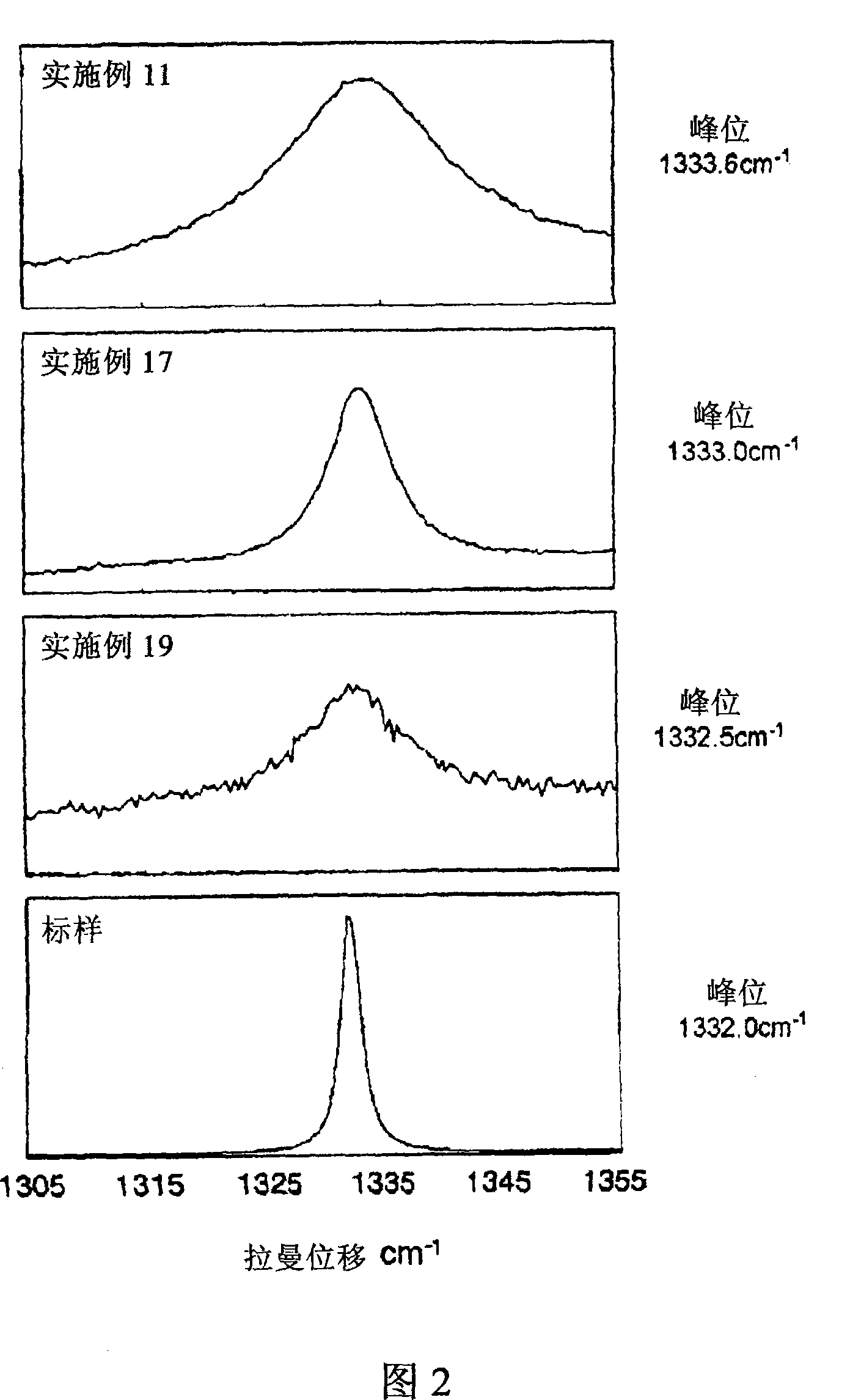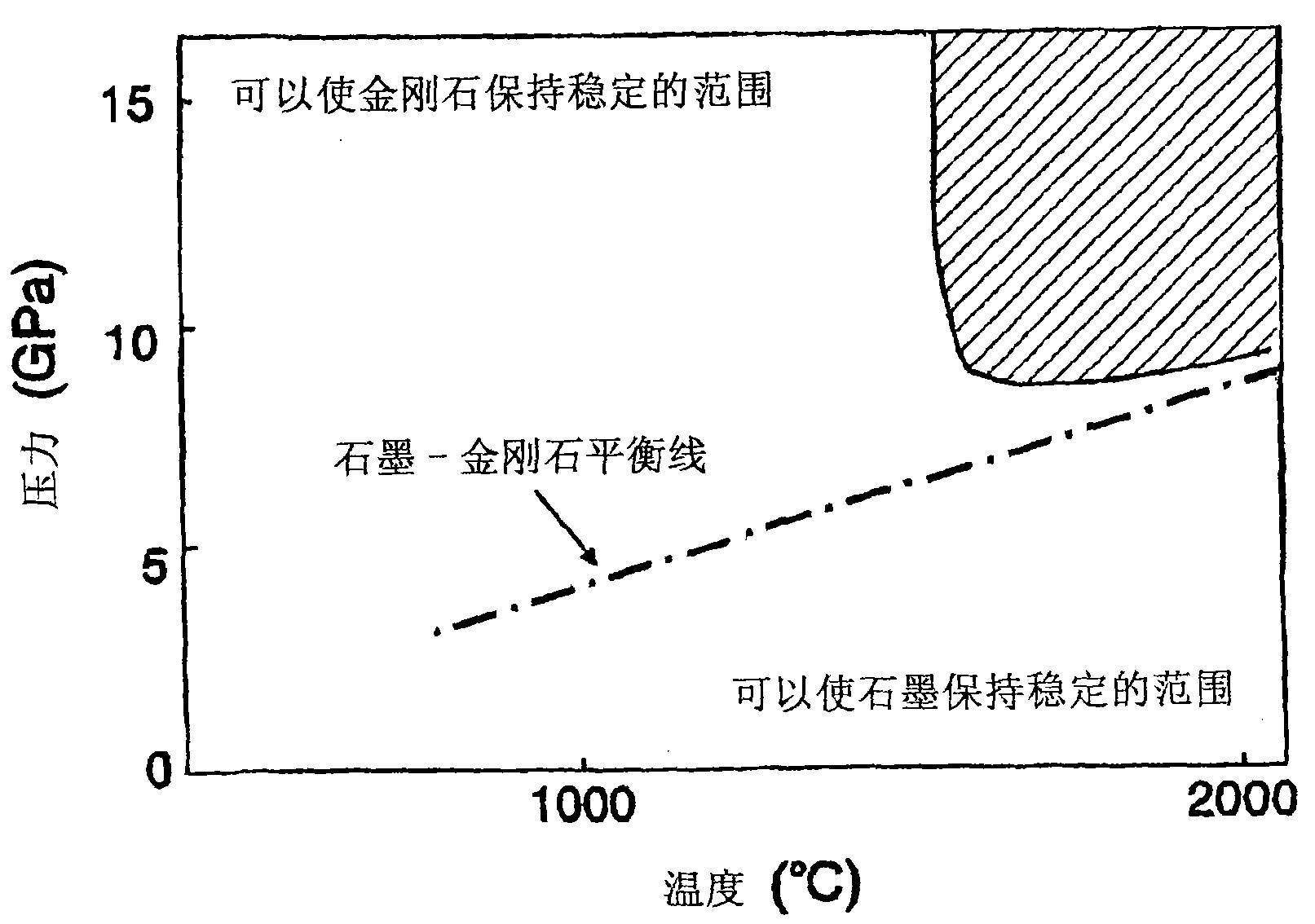High-hardness polycrystalline diamond and process for producing the same
A technology of polycrystalline diamond and high hardness, which is applied in metal processing equipment, turning equipment, manufacturing tools, etc., and can solve the problems that diamond is not applicable and easy to crack
- Summary
- Abstract
- Description
- Claims
- Application Information
AI Technical Summary
Problems solved by technology
Method used
Image
Examples
Embodiment 1-10 and comparative example 1-4
[0139] A variety of non-graphite carbon substances are added to graphite powder with excellent crystallinity with a particle size of 0.05-10 μm and a purity of at least 99.95%, or synthetic diamond powder with a particle size of 0.05-3 μm, such as ultrafinely pulverized into powder Graphite, glassy carbon powder, fullerene powder, carbon nanotube powder, and then the resultant is filled into a Mo package and sealed to prepare a raw material composition.
[0140] The raw material composition is treated for 30 minutes under different pressures and different temperatures by using a belt-type ultra-high pressure generating device to prepare high-hardness polycrystalline diamond.
[0141] The generated phase of the prepared polycrystalline diamond was identified by X-ray diffraction technique, and the size of the constituent particles was detected according to the observation results of TEM. In addition, the surface of the obtained high-hardness polycrystalline diamond is ground in...
Embodiment 11-19
[0150] The raw materials used are composed of the following substances: graphite powder with excellent crystallinity having a particle size of 0.05-10 μm and a purity of at least 99.95%; the above-mentioned ultrafinely pulverized graphite powder; glassy carbon powder; fullerene powder and carbon nanotube powder. These powders were mixed and filled into Mo packages and sealed, and then the packages were treated at different pressures and temperatures for 30 minutes using a belt-type ultra-high pressure generator to prepare samples.
[0151] The generated phase of each sample was identified by X-ray diffraction technique, and the size of the constituent particles of each sample was detected according to the observation result of TEM. In addition, the surface of each sample is ground into a mirror surface, and then the hardness of the mirror surface is measured with a micro-Knoop hardness tester, and the Raman spectrum is measured on the ground surface to obtain the position of t...
PUM
| Property | Measurement | Unit |
|---|---|---|
| particle size | aaaaa | aaaaa |
| particle diameter | aaaaa | aaaaa |
| particle size | aaaaa | aaaaa |
Abstract
Description
Claims
Application Information
 Login to View More
Login to View More - R&D
- Intellectual Property
- Life Sciences
- Materials
- Tech Scout
- Unparalleled Data Quality
- Higher Quality Content
- 60% Fewer Hallucinations
Browse by: Latest US Patents, China's latest patents, Technical Efficacy Thesaurus, Application Domain, Technology Topic, Popular Technical Reports.
© 2025 PatSnap. All rights reserved.Legal|Privacy policy|Modern Slavery Act Transparency Statement|Sitemap|About US| Contact US: help@patsnap.com



